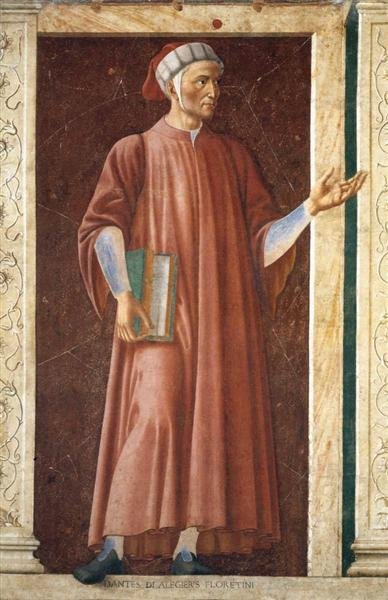The literary movement of the 13th century in Italy - "the sweet new style" /part 4/
Most likely, the authoritative Italian aesthetician and literary critic Benedetto Croce considered these reflections of Dante when he wrote much later that to the poet, the artist who does not reach the form does not get it all because he does not reach himself yours. The poetic matter flows into the soul of every person, only the phrase, that is, the phrase, makes the poet. Indeed, Dante wins above all for formal perfection in lyrical love confessions, and does not necessarily consider correlating the soul's trembling with specific historical situations. According to him, such situations are often "unclean" and therefore unworthy of being introduced into the presentation of a passion. In fact, it is now easy to note that the poetry and poetics of "the sweet new style" are generally not in any way dependent on any local cultural and language conventions.
From Dante's correspondence, we get information that the Italian poetry of the transition from the 13th to the 14th century undergoes its development in three stages: the first is the poet's Bujaintuna, Gutone and Jacopo, whose style is neither "sweet" nor "New"; the beginning of the second one is made by Guido Gwinyceli, whose style is "sweet"; in the third stage, the generation of poets, contemporaries of Dante, renews and enriches Guinitseli's "sweet style". Thus, from the end of the 13th century to the present day, as the founder of the Early Renaissance Italian poetry school, "the sweet new style" , is honored and honored by the Bologna poet Guido Guinitselli, whom Dante describes as "my father and the better ones" sweet song ". Here it is worth noting the continuity in the development of the concept of love by the recent Provencal poets, through Cyaro Davantzati, to Guido Guinitselli. It is not difficult to find out that many ideas and images, borrowed from both Americo di Peguilhan and Jacopo da Lentino /, appear in Guido's early cushions. Indeed, in the poetic poetry, the disputes about the stages in love and its consequences, which are constantly led in the medieval poetry of both France and Italy, resolve. In their poems, many observations and comments from Ovid's "Love Arts" and the Palace Rules "Courses of Love" by Frenchman Chapelain.
In the concept of stylists for love, nobility is inextricably linked with virtue, and love with nobility, the love experience is an incentive for moral self-building, for achieving moral perfection by the individual and for his elevation to God's wisdom. Here, we should mention the Guido Gwynicele Cousin "Amor in the Heart of Noble Stay" (Al cor gentil rempaira sempre Amore), which is considered as a manifesto in "the sweet new style" Circle. In her nobility is defined not as a hereditary acquisition but as an individual virtue. In fact, jeopardizing nobility is a sign of imposing a new civic spirit in the major cities of Tuscany. It means the gradual shift of feudal families from enterprising business men to political life, which are the bearers of new cultural attitudes. In this renowned canyon-manifesto, Guinetselli emphasizes the inevitable timidity of love with spiritual nobility. He affirms the tradition that comes from the troubadours, from the political life that the beloved woman compares to a heavenly angel. The tradition of "the sweet new style" of a beloved woman is invariably attributed to external beauty, inner nobility, humility, charity, and purifying influence on everyone around her.

You have recieved a free upvote from minnowpond, Send 0.1 -> 10 SBD with your post url as the memo to recieve an upvote from up to 100 accounts!
I could barely draw. I admire those who can... This is marvellous